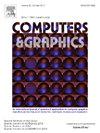Mural image restoration with spatial geometric perception and progressive context refinement
IF 2.5
4区 计算机科学
Q2 COMPUTER SCIENCE, SOFTWARE ENGINEERING
引用次数: 0
Abstract
Ancient murals, as invaluable cultural heritage, have long been a focal point and significant challenge in the field of cultural heritage preservation. Traditional restoration methods typically address texture and structural features separately, leading to inconsistencies between local details and the overall structure. This approach is insufficient to meet the complex demands of texture and structural restoration for ancient murals. To address this issue, this paper proposes a collaborative encoder–decoder architecture (MIR-SGPR) that achieves simultaneous restoration of texture and structural features in ancient mural images. The generator extracts shallow texture features and deep structural features through the encoder and, in conjunction with the Spatial Geometric Awareness (SGA) module, achieves precise modeling of the spatial location and directional information of damaged areas. To resolve the imbalance between local details and global semantics, this paper introduces the Progressive Contextual Refinement (PCR) network, which progressively optimizes multi-scale features and effectively integrates texture and structural information, thereby enhancing the collaborative modeling capability of local details and global structure. Furthermore, this paper proposes the Mask Reverse-Focus Mechanism (MRF), which leverages mask information to eliminate feature interference from undamaged areas, significantly improving the efficiency and accuracy of restoration. Ultimately, the generated images are optimized through both the global and local discriminators. Experimental results demonstrate that this method significantly outperforms existing state-of-the-art approaches across multiple evaluation metrics. The generated restored images exhibit superior visual consistency, detail authenticity, and overall structural recovery, providing an efficient and reliable solution for the digital preservation of ancient murals.

空间几何感知与渐进式情境精细的壁画图像复原
古代壁画作为宝贵的文化遗产,一直是文化遗产保护领域的焦点和重大挑战。传统的修复方法通常分别处理纹理和结构特征,导致局部细节与整体结构不一致。这种方法不足以满足古代壁画复杂的肌理和结构修复需求。为了解决这一问题,本文提出了一种协同编码器-解码器架构(MIR-SGPR),实现了古代壁画图像纹理和结构特征的同时恢复。生成器通过编码器提取浅层纹理特征和深层结构特征,结合空间几何感知(Spatial Geometric Awareness, SGA)模块,实现对受损区域空间位置和方向信息的精确建模。为了解决局部细节与全局语义之间的不平衡,本文引入了渐进式上下文细化(Progressive Contextual Refinement, PCR)网络,该网络对多尺度特征进行渐进式优化,有效整合纹理和结构信息,从而增强了局部细节与全局结构的协同建模能力。此外,本文提出了掩模反聚焦机制(MRF),利用掩模信息消除未损伤区域的特征干扰,显著提高了恢复的效率和精度。最后,通过全局鉴别器和局部鉴别器对生成的图像进行优化。实验结果表明,该方法在多个评估指标上明显优于现有的最先进的方法。生成的修复图像具有良好的视觉一致性、细节真实性和整体结构复原性,为古代壁画的数字化保护提供了高效可靠的解决方案。
本文章由计算机程序翻译,如有差异,请以英文原文为准。
求助全文
约1分钟内获得全文
求助全文
来源期刊

Computers & Graphics-Uk
工程技术-计算机:软件工程
CiteScore
5.30
自引率
12.00%
发文量
173
审稿时长
38 days
期刊介绍:
Computers & Graphics is dedicated to disseminate information on research and applications of computer graphics (CG) techniques. The journal encourages articles on:
1. Research and applications of interactive computer graphics. We are particularly interested in novel interaction techniques and applications of CG to problem domains.
2. State-of-the-art papers on late-breaking, cutting-edge research on CG.
3. Information on innovative uses of graphics principles and technologies.
4. Tutorial papers on both teaching CG principles and innovative uses of CG in education.
 求助内容:
求助内容: 应助结果提醒方式:
应助结果提醒方式:


